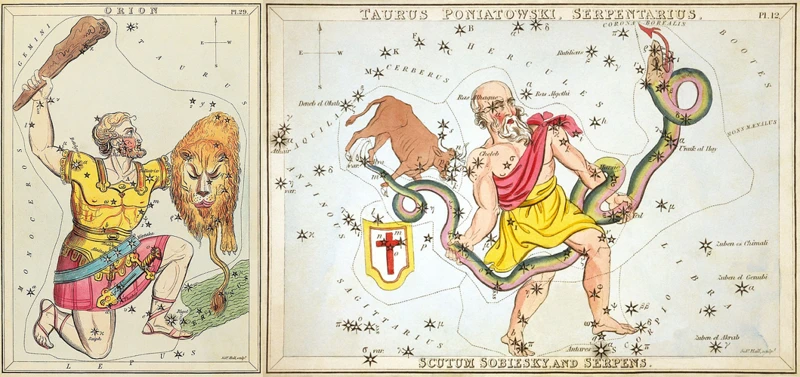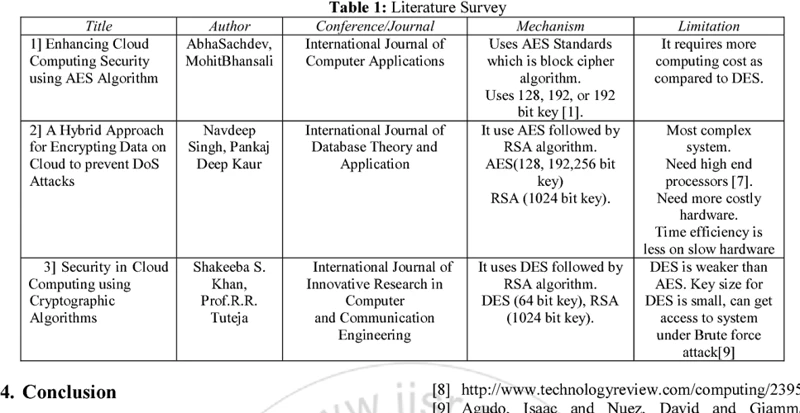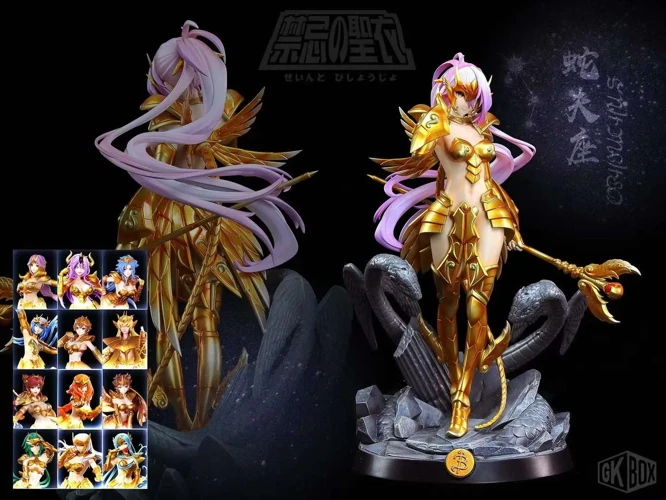Throughout the course of human history, myths and legends have played a significant role in shaping cultures and societies. These ancient tales provide us with a glimpse into the beliefs, values, and imaginations of our ancestors. One such rich mythology that holds a special place in ancient history is Mesopotamian mythology. With its creation stories, pantheon of gods, and heroic epics, Mesopotamian mythology stands out as a unique and complex system of beliefs. In this article, we will delve into the intricacies of Mesopotamian mythology, explore its similarities and differences with other ancient mythologies such as Egyptian, Greek, and Norse, and uncover the fascinating world of gods, heroes, and creation myths that captivated the minds of ancient civilizations.
Contents
- Mesopotamian Mythology
- Comparative Analysis
- Conclusion
- Frequently Asked Questions
- References
-
Frequently Asked Questions
- 1. What is Mesopotamian mythology?
- 2. What are the creation stories in Mesopotamian mythology?
- 3. Who were the key gods and goddesses in Mesopotamian mythology?
- 4. What are some of the heroic epics in Mesopotamian mythology?
- 5. How does Mesopotamian mythology compare to Egyptian mythology?
- 6. What are the similarities between Mesopotamian and Greek mythologies?
- 7. How does Mesopotamian mythology differ from Norse mythology?
- 8. Did Mesopotamian mythology influence other ancient mythologies?
- 9. How was Mesopotamian mythology transmitted over time?
- 10. What is the relevance of Mesopotamian mythology in modern times?
- References
- Read More
Mesopotamian Mythology

Mesopotamian mythology is a diverse and intricate belief system that flourished in the region known as Mesopotamia, located in present-day Iraq. This ancient mythology encompasses a wide range of stories, from creation myths to epic tales of heroic deeds. One of the most well-known creation stories in Mesopotamian mythology is the Enuma Elish, which tells the tale of how the world was formed through a battle between the gods. The pantheon of gods in Mesopotamian mythology is vast and varied, with each deity having their own unique powers and responsibilities. Some of the prominent gods include Anu, the sky god; Enlil, the god of wind and storms; and Ishtar, the goddess of love and war. These gods were believed to govern various aspects of life and were often invoked in religious rituals and ceremonies. Mesopotamian mythology is also rich with heroic epics, such as the Epic of Gilgamesh, which tells the story of a heroic king searching for immortality. These myths and legends played a crucial role in Mesopotamian culture, shaping their understanding of the world and their place in it. Learn more about the houses in your natal chart.
Creation Stories
Creation Stories were an integral part of Mesopotamian mythology, providing explanations for the origins of the world and humanity itself. One prominent creation story is the Enuma Elish, also known as the Babylonian Creation Myth. According to this myth, the universe was born from a primordial chaos known as Tiamat, a female deity representing the ocean, and Apsu, the male god of freshwater. The story describes a violent battle between Tiamat and her offspring, who sought to overthrow her. The young god Marduk eventually rises as the champion of the gods and defeats Tiamat, splitting her body in two to form the heavens and the earth. Marduk then creates humanity from the blood of another god, Kingu, combined with the earth. This epic tale served not only as a creation story but also as a means of legitimizing the rule and authority of the Babylonian king. Another creation story in Mesopotamian mythology is the Atra-Hasis Epic, which recounts the story of the creation and subsequent destruction of humanity by the gods through a massive flood. This flood narrative bears striking similarities to the biblical story of Noah’s Ark. These creation stories, with their divine battles, primal beings, and the formation of the world, provided the Mesopotamians with a framework to understand their existence and the forces that shaped their world. Discover how the new zodiac sign Ophiuchus affects your horoscope.
Pantheon of Gods
The pantheon of gods in Mesopotamian mythology is a fascinating and complex aspect of this ancient belief system. The gods in Mesopotamian mythology were multifaceted beings, each with their own distinct powers, responsibilities, and domains. One of the most prominent gods in the Mesopotamian pantheon is Anu, the sky god and the head of the gods. Anu was believed to have control over the heavens and was often invoked in prayers and rituals for blessings and protection. Another significant deity is Enlil, the god of wind and storms. Enlil was thought to bring forth destructive storms and was regarded as a powerful and authoritative figure among the gods. Ishtar, the goddess of love and war, was another important member of the pantheon. She represented both the nurturing aspects of femininity and the fierce and destructive nature of war. Other gods in the pantheon include Nanna, the moon god, and Ea, the god of freshwater and wisdom. Each god played a crucial role in the daily lives of the Mesopotamians, and it was believed that maintaining a harmonious relationship with the gods was essential for a prosperous existence. Explore more about scientific discoveries related to astrology and the observations of Ophiuchus in this article.
Heroic Epics
Heroic epics are a distinctive and captivating aspect of Mesopotamian mythology. These epic tales center around legendary heroes and their extraordinary adventures, often involving encounters with gods and supernatural beings. One of the most famous heroic epics from Mesopotamian mythology is the Epic of Gilgamesh, which follows the exploits of the mighty king Gilgamesh. The epic chronicles his journey for immortality and explores themes of friendship, mortality, and the human condition. Another notable heroic epic is the Enuma Elish, which recounts the violent and dramatic battle between the gods and the forces of chaos. This epic highlights the divine struggle for power, the formation of the world, and the establishment of order. The Mesopotamian heroic epics are marked by their vivid descriptions, larger-than-life characters, and moral messages that resonate with humanity. These tales served as sources of entertainment, moral guidance, and cultural preservation. They provided a means for the Mesopotamian people to define their values, reflect on their place in the world, and understand the nature of divinity. The influence of these heroic epics extends beyond Mesopotamian mythology, as they paved the way for the development of similar narrative traditions in other ancient civilizations.
Comparative Analysis

When it comes to comparing Mesopotamian mythology with other ancient mythologies, such as Egyptian, Greek, and Norse, intriguing similarities and differences emerge. In Egyptian mythology, for example, the creation story centers around the divine god Atum who emerged from a primordial mound and created the world through his own will. Similarly, Mesopotamian mythology tells of the god Marduk who defeats the chaotic goddess Tiamat in a battle and forms the world from her body. Greek mythology, on the other hand, presents an intricate pantheon of gods and goddesses who each possess their own unique attributes and domains, akin to the diverse gods found in Mesopotamian mythology. Norse mythology differs in its portrayal of a cyclical view of the cosmos, with creation and destruction occurring in a constant cycle, whereas Mesopotamian mythology focuses on a linear progression of time. Despite these differences, all these ancient mythologies share a common theme of gods and creation, reflecting the human fascination with understanding the world and our place in it through divine narratives.
Egyptian Mythology
Egyptian mythology is a captivating and complex belief system that thrived in ancient Egypt. At the heart of Egyptian mythology are the creation stories, which depict the origins of the world and the gods. One well-known creation myth is the Heliopolitan Ennead, which tells of how the sun god Ra emerged from the primeval waters and created all life. The Egyptian pantheon is vast and varied, with gods and goddesses representing various natural and abstract concepts. Osiris, the god of the afterlife, played a central role in Egyptian mythology as the judge of the dead. The goddess Isis, wife of Osiris, was revered as a powerful and nurturing figure, associated with magic and fertility. Ancient Egyptians believed in the concept of Ma’at, which represented cosmic order and balance. This belief influenced their ethical and moral values, as well as the rituals and ceremonies they performed. The Book of the Dead, a collection of spells and prayers, was a crucial text used to guide the deceased through the afterlife. Egyptian mythology showcases a deep reverence for the natural and supernatural forces that governed their world and provided insight into the Egyptian culture and worldview.
Greek Mythology
Greek mythology is a captivating and expansive mythological system that has had a profound impact on Western civilization. It is filled with a plethora of gods, heroes, and epic tales that have inspired countless works of art, literature, and even modern-day movies. The Greek pantheon is a complex hierarchy of gods and goddesses, each with their own distinct roles and responsibilities. Zeus, the king of the gods, ruled over Mount Olympus, the divine realm where the gods resided. Hera, his wife and queen of the gods, was known for her jealousy and played a significant role in many myths. Among the other notable gods and goddesses were Poseidon, the god of the seas, Athena, the goddess of wisdom and warfare, and Aphrodite, the goddess of love and beauty. The myths of Greek mythology are filled with epic tales of heroism and adventure, one of the most well-known being the story of Odysseus and his long journey home in Homer’s “The Odyssey.” Greek mythology also had a strong influence on the concept of fate and destiny, with the Three Fates, Clotho, Lachesis, and Atropos, responsible for weaving the threads of each person’s life. The stories of Greek mythology explore universal themes of love, ambition, hubris, and the consequences of one’s actions. Greek mythology is a rich and intricate tapestry of gods, heroes, and legends that continues to captivate and intrigue people to this day.
Norse Mythology
Norse mythology, originating from the Germanic peoples of Northern Europe, is a captivating and intricate collection of myths and legends. It encompasses the beliefs and stories of the Norse gods, heroes, and legendary creatures. The Norse pantheon is led by Odin, the allfather, who represents wisdom, knowledge, and war. Other notable gods include Thor, the god of thunder and protector of mankind, and Loki, the mischievous trickster god. Norse mythology is known for its epic tales of heroic feats and battles, such as the story of Ragnarök, the apocalyptic battle that brings about the end of the world. The mythological realm of Asgard is depicted as a celestial kingdom where the gods reside, while the mortal realm of Midgard is inhabited by humans. The concept of Valhalla, a divine hall where fallen heroes are taken after death, is another important aspect of Norse mythology. The nine realms, including realms of giants and elves, add depth and complexity to this belief system. Norse mythology also features intriguing creatures like the fearsome dragon Nidhogg and the mischievous dwarves. These myths and legends serve as a source of inspiration and cultural identity for the people of Northern Europe. Norse mythology has influenced various forms of art, literature, and popular culture, and continues to captivate the imagination of many.
Conclusion

In conclusion, the study and comparison of Mesopotamian mythology with other ancient mythologies reveal the rich tapestry of human imagination and the profound impact of these beliefs on ancient civilizations. Mesopotamian mythology, with its fascinating creation stories, intricate pantheon of gods, and epic heroic tales, presents a unique perspective on the origins of the world and the interplay between gods and mortals. While Egyptian mythology showcases a similar emphasis on gods and the afterlife, Greek mythology stands out with its focus on the struggles and triumphs of heroes, and Norse mythology paints a vivid picture of a complex world driven by fate and destiny. Each of these mythologies contributes distinct cultural perspectives and narratives that continue to captivate and inspire us today. The depth and complexity of Mesopotamian mythology, along with its unique characteristics, make it a valuable area of study for those interested in exploring the diverse landscape of ancient mythological beliefs. By comparing and analyzing the similarities and differences between Mesopotamian mythology and other ancient mythologies, we gain a deeper understanding of our shared human heritage and the universal themes that have shaped civilizations throughout history.
Frequently Asked Questions

FAQs About Mesopotamian Mythology
1. What is Mesopotamian mythology?
Mesopotamian mythology refers to the collection of myths, legends, and religious beliefs that were prevalent in the ancient region of Mesopotamia, located in present-day Iraq.
2. What are the creation stories in Mesopotamian mythology?
One of the most well-known creation stories is the Enuma Elish, which describes a battle between gods resulting in the creation of the world. Another creation story involves the god Marduk slaying the chaotic sea goddess Tiamat and using her body to form the world.
3. Who were the main gods in Mesopotamian mythology?
There were numerous gods in Mesopotamian mythology, but some of the main ones include Anu (sky god), Enlil (god of wind and storms), and Ishtar (goddess of love and war).
4. Were there any female deities in Mesopotamian mythology?
Yes, Mesopotamian mythology had several powerful female deities, including Inanna (goddess of love and fertility), Ninhursag (goddess of the earth), and Ereshkigal (queen of the Underworld).
5. What are some of the heroic epics in Mesopotamian mythology?
One of the most famous heroic epics is the Epic of Gilgamesh, which follows the adventures of a legendary king and his quest for immortality.
6. Did Mesopotamians believe in an afterlife?
Yes, the Mesopotamians believed in an afterlife, but their concept of the afterlife was rather bleak. They believed that the souls of the dead would reside in a gloomy underworld, known as Kur.
7. Did Mesopotamians have a flood myth?
Yes, similar to the story of Noah’s Ark in the Bible, Mesopotamian mythology also includes a flood myth. The story of Utnapishtim in the Epic of Gilgamesh recounts a great flood sent by the gods to punish humanity.
8. What role did mythology play in Mesopotamian society?
Mythology played a vital role in Mesopotamian society as it helped explain natural phenomena, social structures, and the origins of the world. It also provided a framework for religious rituals and beliefs.
9. How did Mesopotamian mythology influence later civilizations?
The mythology of ancient Mesopotamia had a significant influence on subsequent cultures, including Ancient Greece and Rome. Many of the Mesopotamian myths and gods were incorporated and adapted into the mythologies of these civilizations.
10. Does Mesopotamian mythology still have relevance today?
While ancient Mesopotamian mythology is no longer actively practiced, its influence can still be seen in literature, art, and our understanding of human history. It continues to intrigue and inspire scholars and enthusiasts of ancient civilizations.
References
- Babylonian, Sumerian or Mesopotamian
- Can you compare and contrast Greek mythology …
- Comparisons between ancient Mesopotamian myths and …
Frequently Asked Questions

1. What is Mesopotamian mythology?
Mesopotamian mythology refers to the collection of myths, legends, and religious beliefs that were followed by the ancient civilizations of Mesopotamia, which is present-day Iraq, Kuwait, and parts of Syria and Turkey. These myths were an integral part of the ancient Mesopotamian culture and played a significant role in shaping their understanding of the world.
2. What are the creation stories in Mesopotamian mythology?
Mesopotamian mythology features several creation stories. One well-known tale is the Enuma Elish, which describes the creation of the world through a cataclysmic battle between the gods. Another notable story is the Atrahasis epic, which narrates the creation of humans and the great flood.
3. Who were the key gods and goddesses in Mesopotamian mythology?
Mesopotamian mythology encompasses a vast pantheon of gods and goddesses. Some of the prominent deities include Anu, the god of the heavens; Enlil, the god of the wind and storms; and Inanna, the goddess of love and war. Other notable figures include Ea, Ninhursag, and Marduk, among many others.
4. What are some of the heroic epics in Mesopotamian mythology?
Mesopotamian mythology is rich with heroic epics that depict the adventures and exploits of legendary figures. The Epic of Gilgamesh is perhaps the most famous of these epics, showcasing the quest for immortality by the eponymous hero. Other notable heroic tales include the Epic of Atrahasis and the Epic of Etana.
5. How does Mesopotamian mythology compare to Egyptian mythology?
While both Mesopotamian and Egyptian mythologies developed in ancient civilizations along the Nile and Tigris-Euphrates rivers, they have distinct differences. For instance, Mesopotamian mythology focuses more on conflict and the struggles among gods, while Egyptian mythology emphasizes harmony and the idea of divine kingship.
6. What are the similarities between Mesopotamian and Greek mythologies?
Both Mesopotamian and Greek mythologies share common themes and motifs. They feature powerful gods and goddesses who often meddle in mortal affairs, epic battles between divine beings, and tales of heroic figures undertaking perilous quests. Additionally, both mythologies explore concepts of creation, the afterlife, and the human condition.
7. How does Mesopotamian mythology differ from Norse mythology?
Mesopotamian and Norse mythologies differ in several aspects. Norse mythology emphasizes a cyclical view of time and a belief in destiny, while Mesopotamian mythology focuses more on the idea of human free will. Additionally, Norse mythology prominently features gods associated with nature and the elements, whereas Mesopotamian mythology has a more diverse pantheon.
8. Did Mesopotamian mythology influence other ancient mythologies?
Absolutely. Mesopotamian mythology had a significant influence on the development of other ancient mythologies. For example, elements of Mesopotamian mythology can be seen in the mythologies of nearby civilizations such as the Assyrians, Babylonians, and Persians. It even had an impact on the Canaanite and Hebrew mythological traditions.
9. How was Mesopotamian mythology transmitted over time?
Mesopotamian mythology was primarily transmitted through oral tradition, with stories and beliefs being passed down from generation to generation. However, written records such as cuneiform tablets also played a crucial role in preserving and disseminating these myths. These writings were often found in royal libraries and temple archives.
10. What is the relevance of Mesopotamian mythology in modern times?
Mesopotamian mythology, like all ancient mythologies, offers valuable insights into the beliefs, values, and cultural practices of the ancient civilizations that created them. Understanding Mesopotamian mythology helps us comprehend the roots of human thought, the development of religious concepts, and the evolution of storytelling. Additionally, it allows us to appreciate the enduring legacy of these ancient civilizations in shaping our modern world.
References
- The Epic of Gilgamesh: 3 Parallels from Mesopotamia to …
- Comparisons between ancient Mesopotamian myths and …
- Mesopotamian culture compared to the Grecian one







